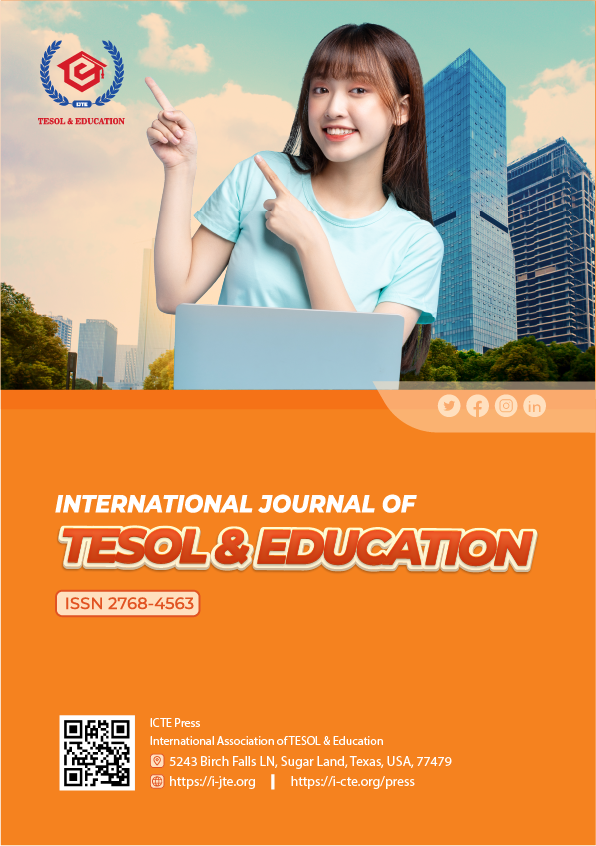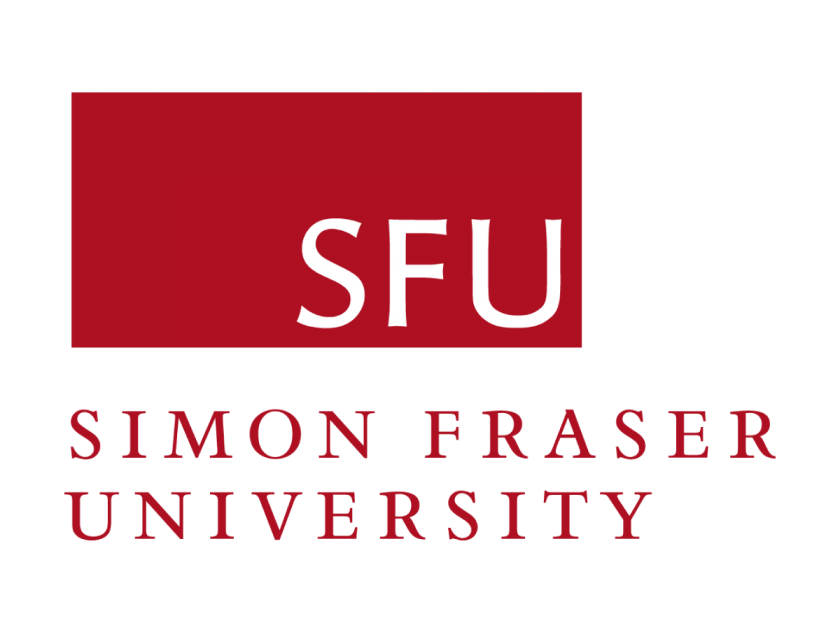Lecturers’ Perceptions of the Quality Assurance System for General English Teaching Programs in Vietnamese Higher Education
DOI:
https://doi.org/10.54855/ijte.25521Keywords:
quality assurance, General English Teaching Program, higher education, lecturers’ perceptionAbstract
Understanding lecturers’ perceptions of Quality Assurance (QA) is vital for improving English language programs. Despite growing attention to QA in higher education, limited research explores how lecturers view its implementation. This study addresses that gap by examining QA practices in General English Teaching programs at two universities in Ho Chi Minh City, Vietnam (HEI1 and HEI2). Using an explanatory mixed-methods approach, data were collected through questionnaires, interviews, and document analysis. Findings showed that lecturers from both institutions acknowledged QA efforts in curriculum design, teaching, assessment, staff development, and facilities. However, HEI2 consistently scored higher across most criteria. Qualitative insights highlighted HEI2’s strengths in placement testing, workload design, staff training, and technology use. The study suggests HEI1 could benefit from benchmarking these practices. By involving lecturers, the research contributes to understanding QA implementation and offers practical recommendations for enhancing English programs in Vietnamese higher education.
References
Adam, S. (2004). Using learning outcomes: A consideration of the nature, role, application, and implications for European education of employing ‘learning outcomes’ at the local, national, and international levels. United Kingdom Bologna Seminar. https://doi.org/10.1016/j.tate.2004.09.012
Alvesson, M., & Sandberg, J. (2013). Has management studies lost its way? Ideas for more imaginative and innovative research. Journal of Management Studies, 50(1), 128–152. https://doi.org/10.1111/j.1467-6486.2012.01070.x
Anderson, L. W., & Krathwohl, D. R. (2001). A taxonomy for learning, teaching, and assessing: A revision of Bloom's Taxonomy of educational objectives. Longman.
Balabag, V. C., & Candilas, K. S. (2024). Improving College Students’ Metacognition through Self-Paced Learning and Direct Instruction in a Remote Learning Modality. BRU ELT JOURNAL, 2(2), 142-157. https://doi.org/10.14456/bej.2024.11
Barnett, R. (2000). Realizing the university in an age of supercomplexity. Society for Research into Higher Education & Open University Press.
Barrie, S. C. (2006). Understanding what we mean by the generic attributes of graduates. Higher Education, 51(2), 215–241.
Biggs, J. (2001). The reflective institution: Assuring and enhancing the quality of teaching and learning. Higher Education, 41(3), 221–238. https://doi.org/10.1023/A:1004181331049
Biggs, J. (2003). Aligning teaching and assessing to course objectives. Teaching and Learning in Higher Education: New Trends and Innovations, 13(2), 13–17.
Biggs, J., & Tang, C. (2011). Teaching for quality learning at university (4th ed.). McGraw-Hill Education.
Boud, D., & Falchikov, N. (2007). Rethinking assessment in higher education: Learning for the longer term. Routledge. https://doi.org/10.4324/9780203964309
Brew, A. (2006). Research and teaching: Beyond the divide. Palgrave Macmillan. https://doi.org/10.1057/9780230591904
Brookhart, S. M. (2023). Assessment Literacy in a Better Assessment Future. Chinese Journal of Applied Linguistics, 46(2), 162-179. https://doi.org/10.1515/CJAL-2023-0202
Brown, H. D. (2014). Principles of language learning and teaching (6th ed.). Pearson Education.
Brown, G., & Knight, P. (1994). Assessing learners in higher education. Kogan Page.
Brown, M. (2012). Learning spaces: Using the potential of physical and virtual spaces in teaching and learning. In M. Keppell et al. (Eds.), Physical and virtual learning spaces in higher education (pp. 41–57). IGI Global. https://doi.org/10.4018/978-1-4666-1149-0.ch003
Carless, D. (2023). Teacher feedback literacy, feedback regimes and iterative change: towards enhanced value in feedback processes. Higher Education Research & Development, 42(8), 1890–1904. https://doi.org/10.1080/07294360.2023.2203472
Chen, Z., & Goh, C. C. M. (2011). Teaching oral English in higher education: Challenges to EFL teachers. Teaching in Higher Education, 16(3), 333–345. https://doi.org/10.1080/13562517.2010.546527
Chickering, A. W., & Gamson, Z. F. (1987). Seven principles for good practice in undergraduate education. AAHE Bulletin, 39(7), 3–7.
Coates, H. (2005). The value of student engagement for higher education quality assurance. Quality in Higher Education, 11(1), 25–36. https://doi.org/10.1080/13538320500074915
Council of Europe. (2020). Common European Framework of Reference for Languages: Learning, teaching, assessment. Cambridge University Press.
Dang, T. M. T., & Pham, T. Q. (2024). Alignment between Course Learning Outcomes and Assessments: An Analysis within Linguistic Programs at a University in Vietnam. International Journal of TESOL and Education, 4(2), 31-45. DOI: https://doi.org/10.54855/ijte.24422
Dang, T. M. T., & Tong, T. M. H. (2024). Instruction-Giving in EFL Classrooms: A Case of a University in Viet Nam. International Journal of TESOL & Education, 4(2), 46-61. DOI: https://doi.org/10.54855/ijte.24423
Devlin, M., & Samarawickrema, G. (2010). The criteria of effective teaching in a changing higher education context. Higher Education Research & Development, 29(2), 111–124. https://doi.org/10.1080/07294360903244398
Doran, G. T. (1981). There’s a SMART way to write management’s goals and objectives. Management Review, 70(11), 35–36.
Dörnyei, Z. (2001). Motivational strategies in the language classroom. Cambridge University Press.
Driscoll, A., & Wood, S. (2007). Developing Outcomes-Based Assessment for Learner-Centered Education: A Faculty introduction. http://www.bchs.edu/files/u41/nt_for_Learner-centered_Education-Weingarten.pdf
Ellis, R. (2003). Task-based language learning and teaching. Oxford University Press.
European Commission. (2015). ECTS users’ guide 2015. Publications Office of the European Union. https://doi.org/10.2766/87192
Fry, H., Ketteridge, S., & Marshall, S. (2008). A handbook for teaching and learning in higher education: Enhancing academic practice (3rd ed.). Routledge.
Galloway, F. J. (2009). Entry requirements and student retention: Balancing quality and access in tertiary education. Journal of Higher Education Policy and Management, 31(3), 245–259.
Gao, X. (2013). The challenges of learning English in higher education: A case study. Language Teaching Research, 17(4), 473–494. https://doi.org/10.1177/1362168813494125
Garrison, D. R., & Vaughan, N. D. (2008). Blended learning in higher education: Framework, principles, and guidelines. Jossey-Bass. https://doi.org/10.1002/9781118269558
Gibbs, G., & Simpson, C. (2004). Conditions under which assessment supports students’ learning. Learning and Teaching in Higher Education, 1, 3–31.
Government of Vietnam (2016, October 18). Vietnamese qualifications framework, approved by the prime minister of Vietnam. Decision 1982/QD-TTg. https://chinhphu.vn/default.aspx?pageid=27160&docid=186972
Gu, P. Y., & Lam, R. (2023). Developing Assessment Literacy for Classroom-Based Formative Assessment. Chinese Journal of Applied Linguistics, 46(2), 155-161. https://doi.org/10.1515/CJAL-2023-0201
Guri-Rosenblit, S. (2005). ‘Distance education’ and ‘e-learning’: Not the same thing. Higher Education, 49(4), 467–493. https://doi.org/10.1007/s10734-004-0040-0
Hoang, V.V. (2010). The current situation and issues of the teaching of English in Vietnam. 立命館言語文化研究, 22(1), 7-18.
Harden, R. M. (2002). Learning outcomes and instructional objectives: Is there a difference? Medical Teacher, 24(2), 151–155.
Harvey, L., & Green, D. (1993). Defining quality. Assessment & Evaluation in Higher Education, 18(1), 9-34. https://doi.org/10.1080/0260293930180102
Harvey, L. (2004). The power of accreditation: Views of academics. Journal of Higher Education Policy and Management, 26(2), 207-223. https://doi.org/10.1080/1360080042000218267
Harvey, L., & Newton, J. (2007). Transforming quality evaluation: Moving on. In D. F. Westerheijden, B. Stensaker, & M. J. Rosa (Eds.), Quality Assurance in Higher Education: Trends in Regulation, Translation and Transformation (pp. 225–245). Springer.
Ho, N. P., & Ha, Y. N. (2025). Evaluation of the Effectiveness of Learning Outcomes from Students’ Perspectives towards Research Writing Course: A Case Study. International Journal of Language Instruction, 4(1), 33–49. https://doi.org/10.54855/ijli.25413
Hutchinson, T., & Waters, A. (1987). English for specific purposes: A learning-centred approach. Cambridge University Press.
Johnson, R., Brown, A., & Smith, J. (2020). Impact of self-paced learning on metacognition in college students: A comparative study. Educational Psychology Review, 38(3), 567-582. https://doi.org/10.1007/s10648-020- 09558-2
Kember, D. (2004). Interpreting student workload and the factors which shape students’ perceptions of their workload. Studies in Higher Education, 29(2), 165–184. https://doi.org/10.1080/0307507042000190778
Kennedy, D., Hyland, Á., & Ryan, N. (2009). Learning outcomes and competences. In E. Froment et al. (Eds.), EUA Bologna Handbook: Making Bologna Work. Raabe Academic Publishers.
Knapper, C. K., & Cropley, A. J. (2000). Lifelong learning in higher education (3rd ed.). Routledge.
Kohoutek, J. (2009). Quality assurance in higher education: A case study approach. Quality in Higher Education, 15(2), 133-145. https://doi.org/10.1080/13538320902995764
Kuh, G. D., Kinzie, J., Buckley, J. A., Bridges, B. K., & Hayek, J. C. (2006). What matters to student success: A review of the literature. National Postsecondary Education Cooperative.
Kuh, G. D., & Hu, S. (2001). The effects of student-faculty interaction on students' educational gains in college. Research in Higher Education, 42(3), 309–332. https://doi.org/10.1023/1010881521483
Laurillard, D. (2012). Teaching as a design science: Building pedagogical patterns for learning and technology. Routledge. https://doi.org/10.4324/9780203125083
Martin, M., & Stella, A. (2007). External quality assurance in higher education: Making choices. UNESCO.
Materu, P. (2007). Higher Education Quality Assurance in Sub-Saharan Africa: Status, Challenges, Opportunities, and Promising Practices. World Bank Working Paper No. 124. Washington, DC: The World Bank.
Merrill, M. D. (2002). First principles of instruction. Educational Technology Research and Development, 50(3), 43–59. https://doi.org/10.1007/BF02505024
Ministry of Education and Training (MOET). (2021). Circular 17/2021/TT-BGDĐT on Regulations for Assessment and Evaluation in General Education Institutions. Issued June 22, 2021.
Newton, J. (2000). Feeding the beast or improving quality? Quality in Higher Education, 6(2), 153-163. https://doi.org/10.1080/713692740
Nguyen, V. L. (2024). The Impact of Online Resources via Personal Devices on English-Majored Students’ Learning Practices. International Journal of Language Instruction, 3(4), 110–118. https://doi.org/10.54855/ijli.24346
Oblinger, D. G., & Oblinger, J. L. (2005). Educating the net generation. EDUCAUSE.
O’Neill, G. (2020). Designing effective learning outcomes. Teaching in Higher Education, 25(6), 720–732. https://doi.org/10.1080/13562517.2019.1613352
Owlia, M. S., & Aspinwall, E. M. (1996). A framework for the dimensions of quality in higher education. Quality Assurance in Education, 4(2), 12-20. https://doi.org/10.1108/09684889610116012
Pereira, L., Barreto, R., & Melro, A. (2021). Digital transformation in quality assurance processes: Higher education perspectives. Education Sciences, 11(2), 84. https://doi.org/10.3390/educsci11020084
Prince, M. (2004). Does active learning work? A review of the research. Journal of Engineering Education, 93(3), 223–231. https://doi.org/10.1002/j.2168-9830.2004.tb00809.x
Quach, T. T. N., & Nguyen, L. (2024). Using Accreditation Standards for Internal Quality Assurance for Tertiary General English Program in Vietnam. International Journal of TESOL and Education, 4(3), 1-19. DOI: https://doi.org/10.54855/ijte.24431
Richards, J. C. (2006). Communicative language teaching today. Cambridge University Press.
Sadler, D. R. (1989). Formative assessment and the design of instructional systems. Instructional Science, 18(2), 119–144. https://doi.org/10.1007/BF00117714
Santiago, P., Tremblay, K., Basri, E., & Arnal, E. (2008). Tertiary Education for the Knowledge Society: Volume 1 and 2. OECD Publishing. https://doi.org/10.1787/9789264046535-en
Schindler, L., Puls-Elvidge, S., Welzant, H., & Crawford, L. (2015). Definitions of quality in higher education: A synthesis of the literature. Higher Learning Research Communications, 5(3), 3-13. https://doi.org/10.18870/hlrc.v5i3.244
Shulman, L. S. (1987). Knowledge and teaching: Foundations of the new reform. Harvard Educational Review, 57(1), 1–22. https://doi.org/10.17763/haer.57.1.j463w79r56455411
Smith, J., & Naylor, R. A. (2001). Dropping out of university: A statistical analysis of the probability of withdrawal for UK university students. Journal of the Royal Statistical Society: Series A (Statistics in Society), 164(2), 389–405.
Stensaker, B. (2008). Outcomes of quality assurance: A discussion of knowledge, methodology and validity. Quality in Higher Education, 14(1), 3–13. https://doi.org/10.1080/13538320802011561
Sun, Y., & Yang, F. (2021). The effectiveness of mobile-assisted language learning in higher education: A meta-analysis. Educational Technology Research and Development, 69(2), 1–20. https://doi.org/10.1007/s11423-020-09821-3
Tam, M. (2001). Measuring quality and performance in higher education. Quality in Higher Education, 7(1), 47-54. https://doi.org/10.1080/13538320120045076
Temple, P. (2008). Learning spaces in higher education: An under‐researched topic. London Review of Education, 6(3), 229–241. https://doi.org/10.1080/14748460802489363
Tran, T. M. L. (2024). Blended Learning in EFL Classrooms at a Vietnamese University from Students' Perspectives. International Journal of TESOL & Education, 4(2), 99-117. DOI: https://doi.org/10.54855/ijte.24426
Tyler, R. W. (1949). Basic principles of curriculum and instruction. University of Chicago Press.
Van Vught, F. A., & Westerheijden, D. F. (1994). Towards a general model of quality assessment in higher education. Higher Education, 28(3), 355–371. https://doi.org/10.1007/BF01383995
Yastıbaş, A. E., & Takkaç, M. (2018). Understanding language assessment literacy: Developing language assessment. Journal of Language and Linguistic Studies, 14(1), 178-193.
Yorke, M., & Longden, B. (2004). Retention and student success in higher education. McGraw-Hill Education.
Wang, S. (2017). Flipped classrooms in teaching English as a foreign language: A case study in a university setting. The Journal of Asia TEFL, 14(4), 655–668. https://doi.org/10.18823/asiatefl.2017.14.4.5.655
Wang, J., & Cheng, Y. (2018). The impact of quality assurance on student learning outcomes: Evidence from China. Studies in Higher Education, 43(4), 634-649. https://doi.org/10.1080/03075079.2016.1184238
Wiggins, G., & McTighe, J. (2005). Understanding by design, expanded (2nd ed.). Alexandria VA: Association for Supervision and Curriculum Development.
Zhang, Y., & Yin, H. (2019). The impact of general English programs on student outcomes: A meta-analytic review. Journal of English for Academic Purposes, 38, 1–12. https://doi.org/10.1016/j.jeap.2019.06.001
Downloads
Published
Issue
Section
License
Copyright (c) 2025 Quach Thi To Nu, Nguyen Loc

This work is licensed under a Creative Commons Attribution 4.0 International License.
The copyright of all articles published in the International Journal of TESOL & Education (ijte) remains with the Authors, i.e. Authors retain full ownership of their article. Permitted third-party reuse of the open access articles is defined by the applicable Creative Commons (CC) end-user license which is accepted by the Authors upon submission of their paper. All articles in the ijte are published under the CC BY-NC 4.0 license, meaning that end users can freely share an article (i.e. copy and redistribute the material in any medium or format) and adapt it (i.e. remix, transform and build upon the material) on the condition that proper attribution is given (i.e. appropriate credit, a link to the applicable license and an indication if any changes were made; all in such a way that does not suggest that the licensor endorses the user or the use) and the material is only used for non-commercial purposes.
Authors retain copyright and grant the journal the right of first publication with the work simultaneously licensed under a Creative Commons Attribution 4.0 International License that allows others to share the work with an acknowledgment of the work's authorship and initial publication in this journal.
Authors are able to enter into separate, additional contractual arrangements for the non-exclusive distribution of the journal's published version of the work (e.g., post it to an institutional repository, in a journal or publish it in a book), with an acknowledgment of its initial publication in this journal.











